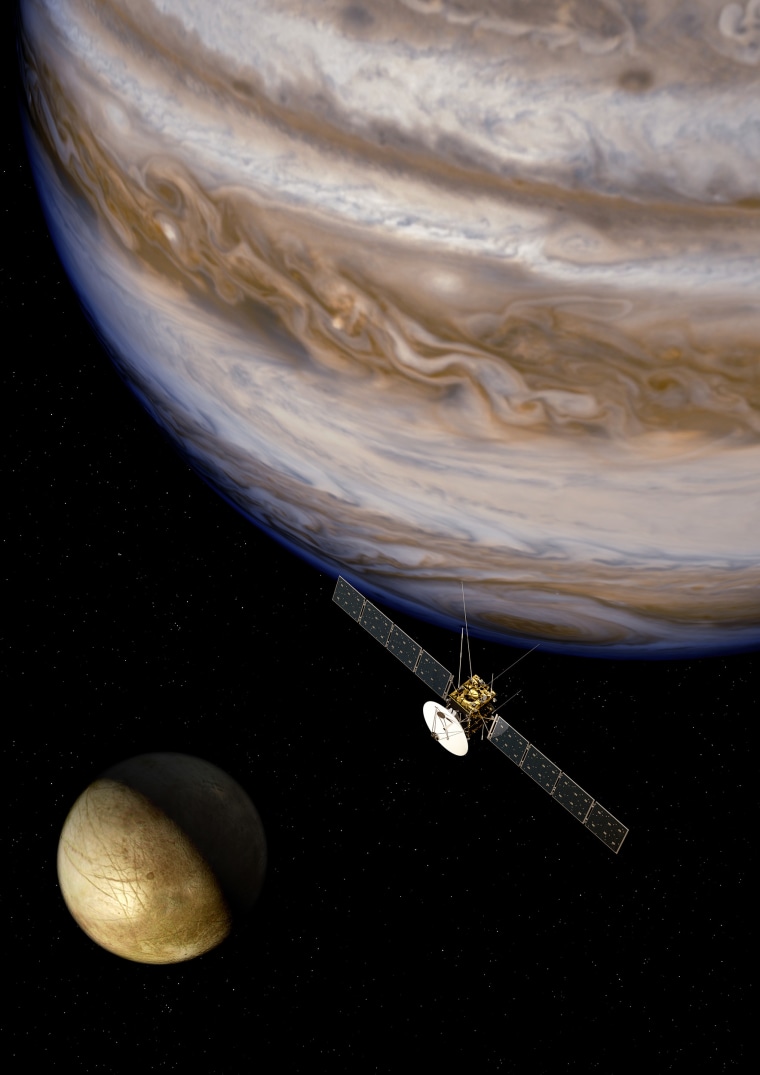The European Space Agency has given the go-ahead for an exciting mission to explore the icy moons of Jupiter, as well as the giant planet itself.
JUICE — JUpiter ICy moons Explorer — will consist of a solar-powered spacecraft that will spend 3.5 years within the Jovian system, investigating Ganymede, Europa and the upper atmosphere of Jupiter. Anticipated to launch in June 2022, JUICE would arrive at Jupiter in early 2030.
As its name implies, JUICE’s main targets are Jupiter’s largest icy moons — Ganymede and Europa — which are thought to have liquid oceans concealed beneath their frozen surfaces.
The largest moon in the Solar System, Ganymede is also thought to have a molten iron core generating a magnetic field much like Earth’s. The internal heat from this core may help keep Ganymede’s underground ocean liquid, but the dynamics of how it all works are not quite understood.
JUICE will also study ice-coated Europa, whose cueball-smooth surface is lined with cracks and jumbled mounds of frozen material. Those seem to be indicators of a subsurface ocean, although it's not yet known how deep or how extensive the ocean might be. If the ocean exists, as suspected, scientists will want to learn about its composition and whether or not it could be hospitable to life.
“JUICE will give us better insight into how gas giants and their orbiting worlds form, and their potential for hosting life,” said Professor Alvaro Giménez Cañete, ESA’s Director of Science and Robotic Exploration.
The JUICE spacecraft was originally supposed to join a NASA mission dedicated to the investigation of Europa, but NASA deemed their proposed mission too costly, and it was canceled. Robert Pappalardo, study scientist for the Europa mission based at NASA's Jet Propulsion Laboratory, said the space agency may still supply some instruments for the spacecraft “assuming that the funding situation in the United States can bear it.”
JUICE will also capture images of Jupiter’s moon Callisto, search for auroras in the gas giant’s upper atmosphere, and measure the planet’s powerful magnetic field.
JUICE's mission cost is estimated at $1.1 billion (830 million euros). JUICE was selected over two other space missions that were under consideration: the ATHENA X-ray observatory and the NGO gravitational wave observatory.
More about Jupiter and its moons:
- NASA's Juno probe blasts off for Jupiter
- Oceans may exist on two moons of Jupiter
- Life beyond Earth? Jupiter's moons may hold clues
Stay tuned to ESA’s JUICE mission page .
Jason is a graphic designer living in Dallas. He writes about astronomy and space exploration on Universe Today and also on his blog , Discovery News and National Geographic News. This report was originally published on Universe Today as and supplemented by msnbc.com.
